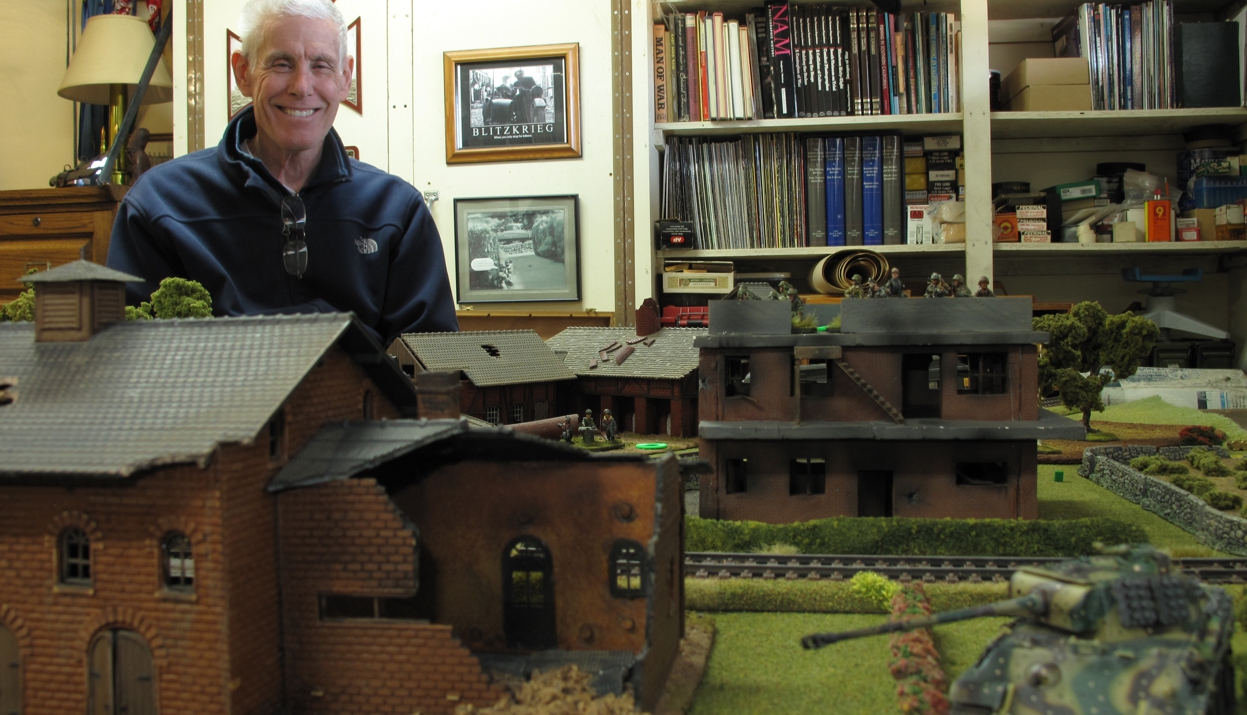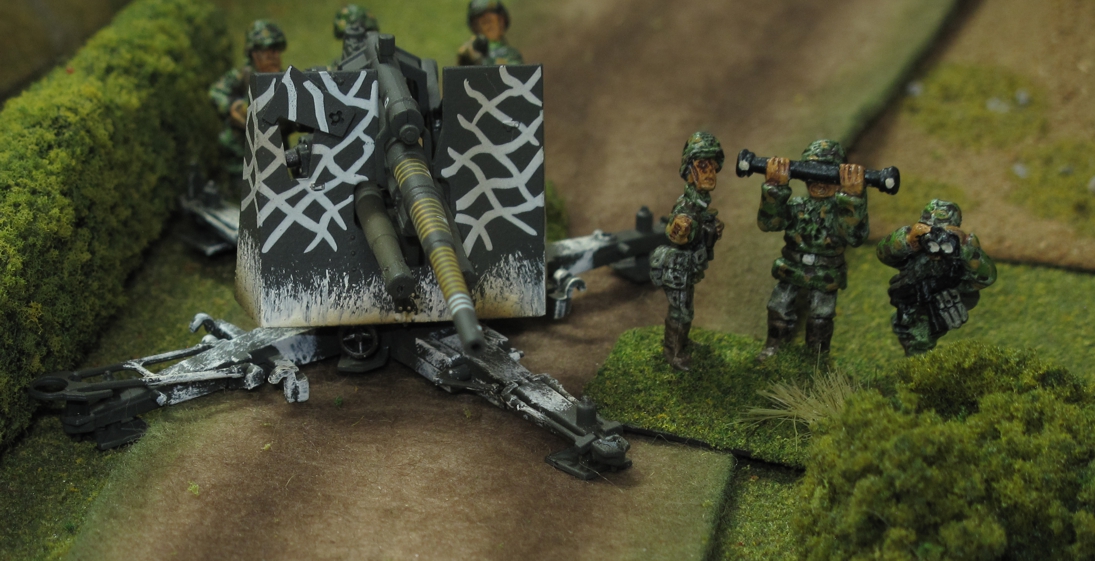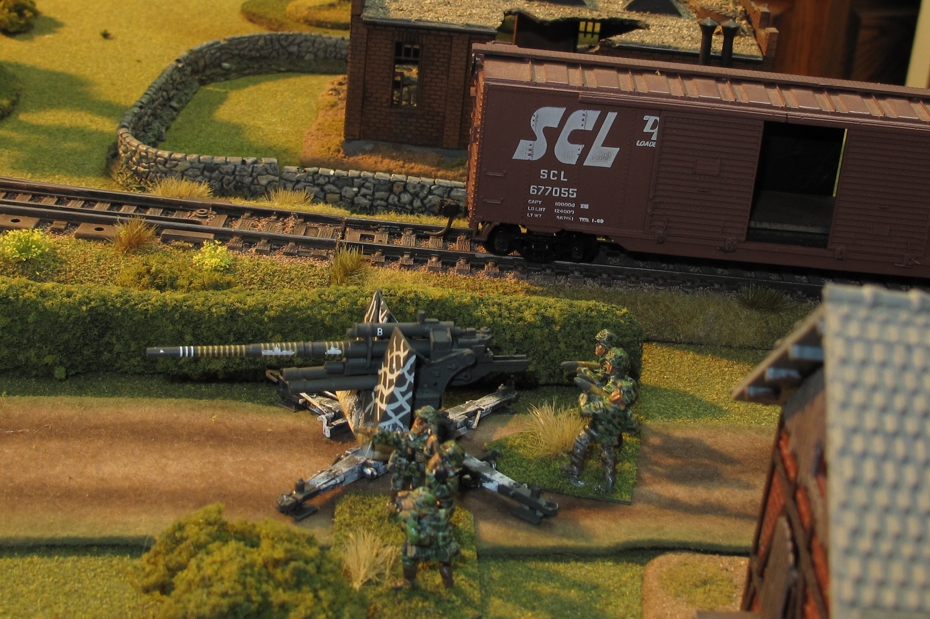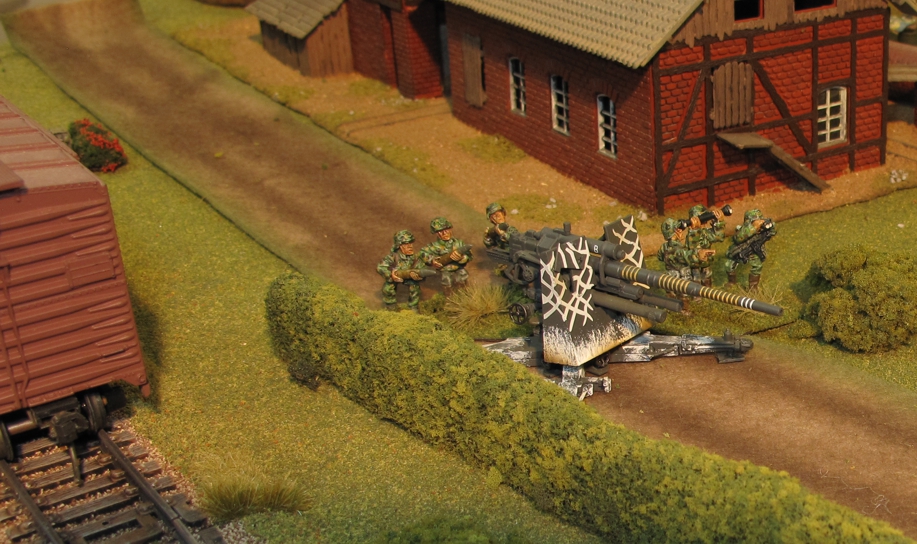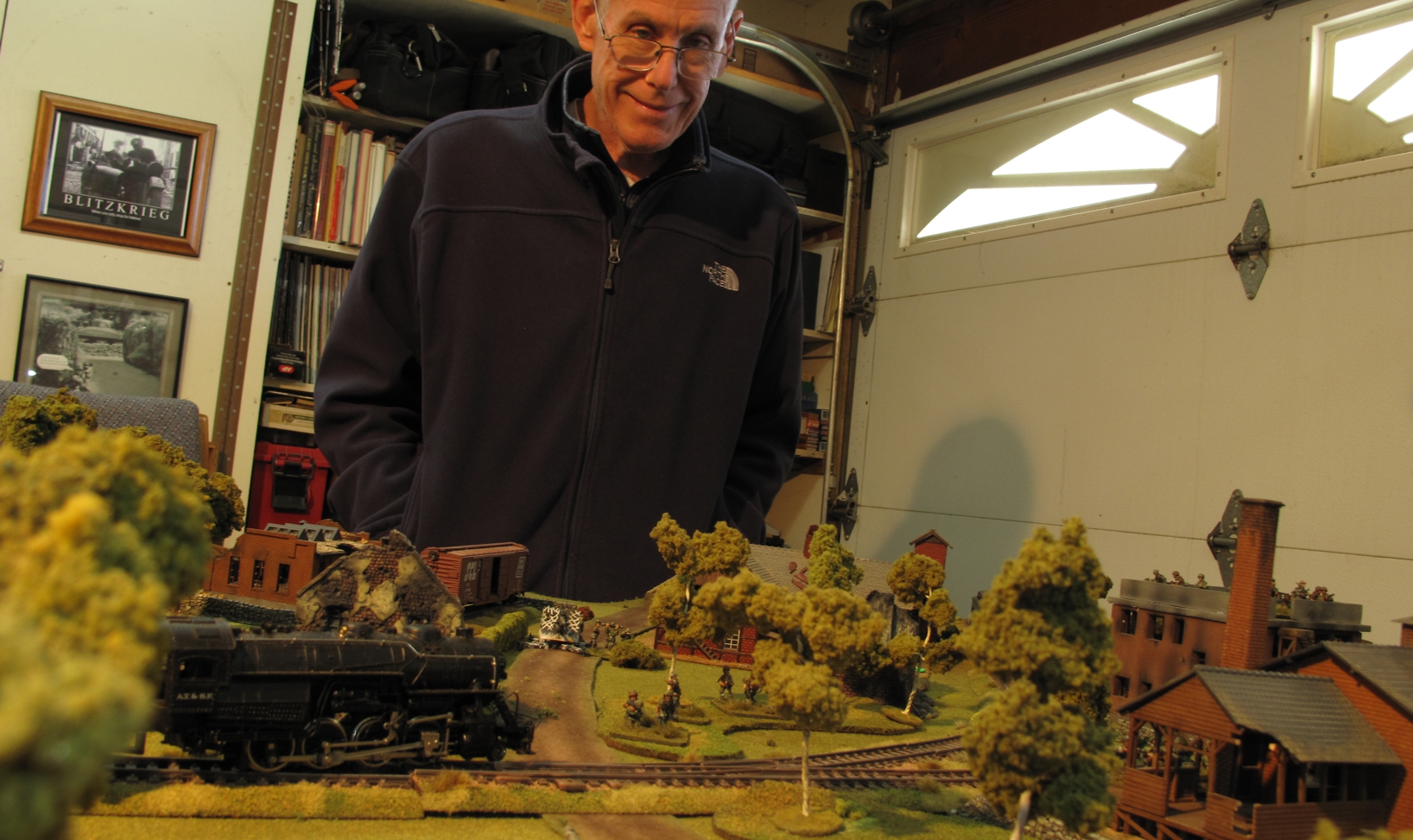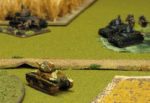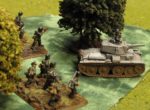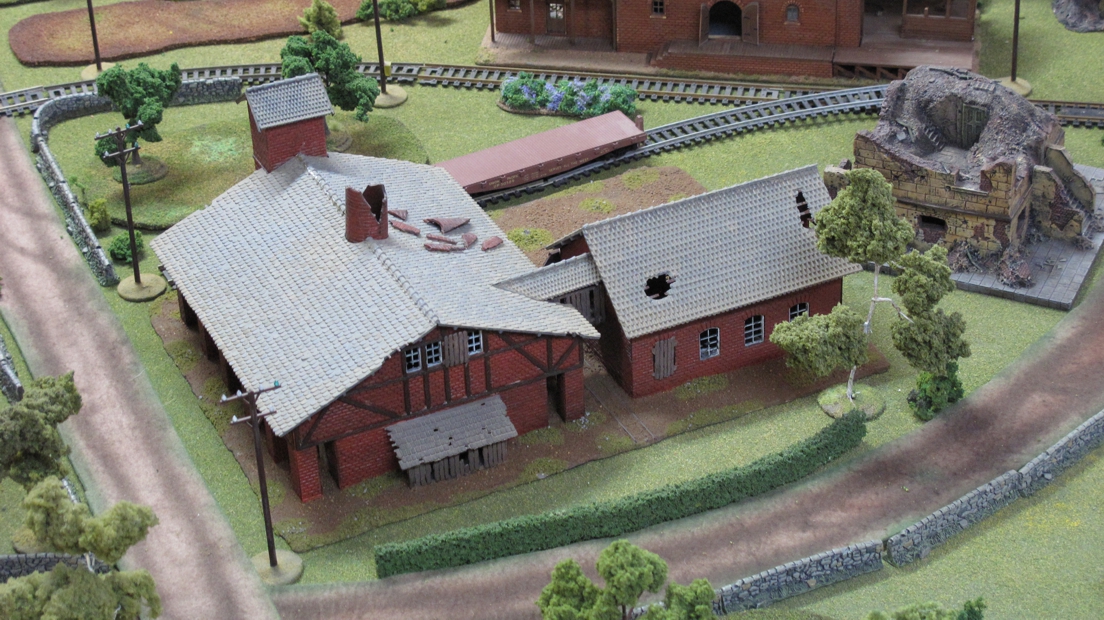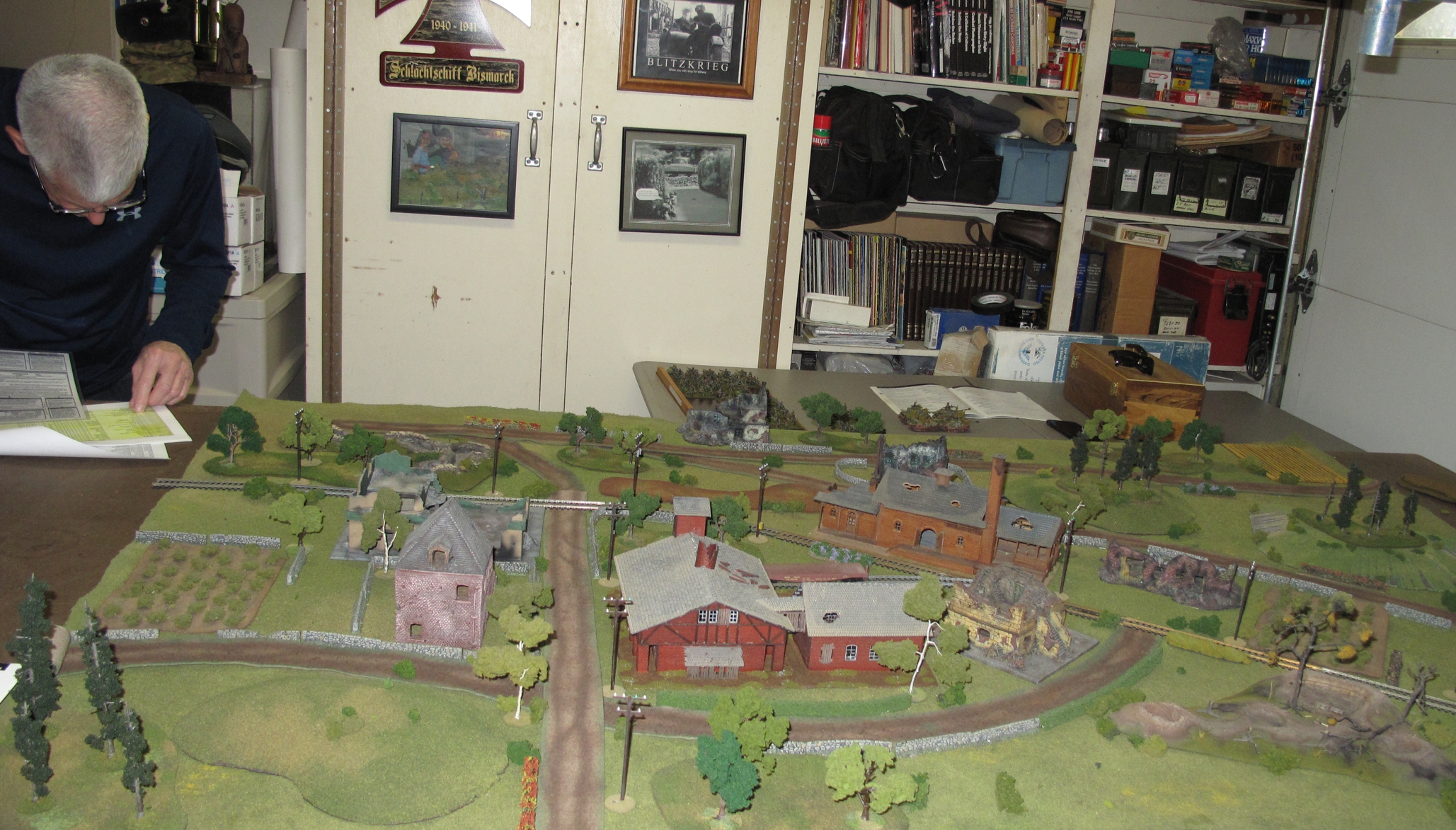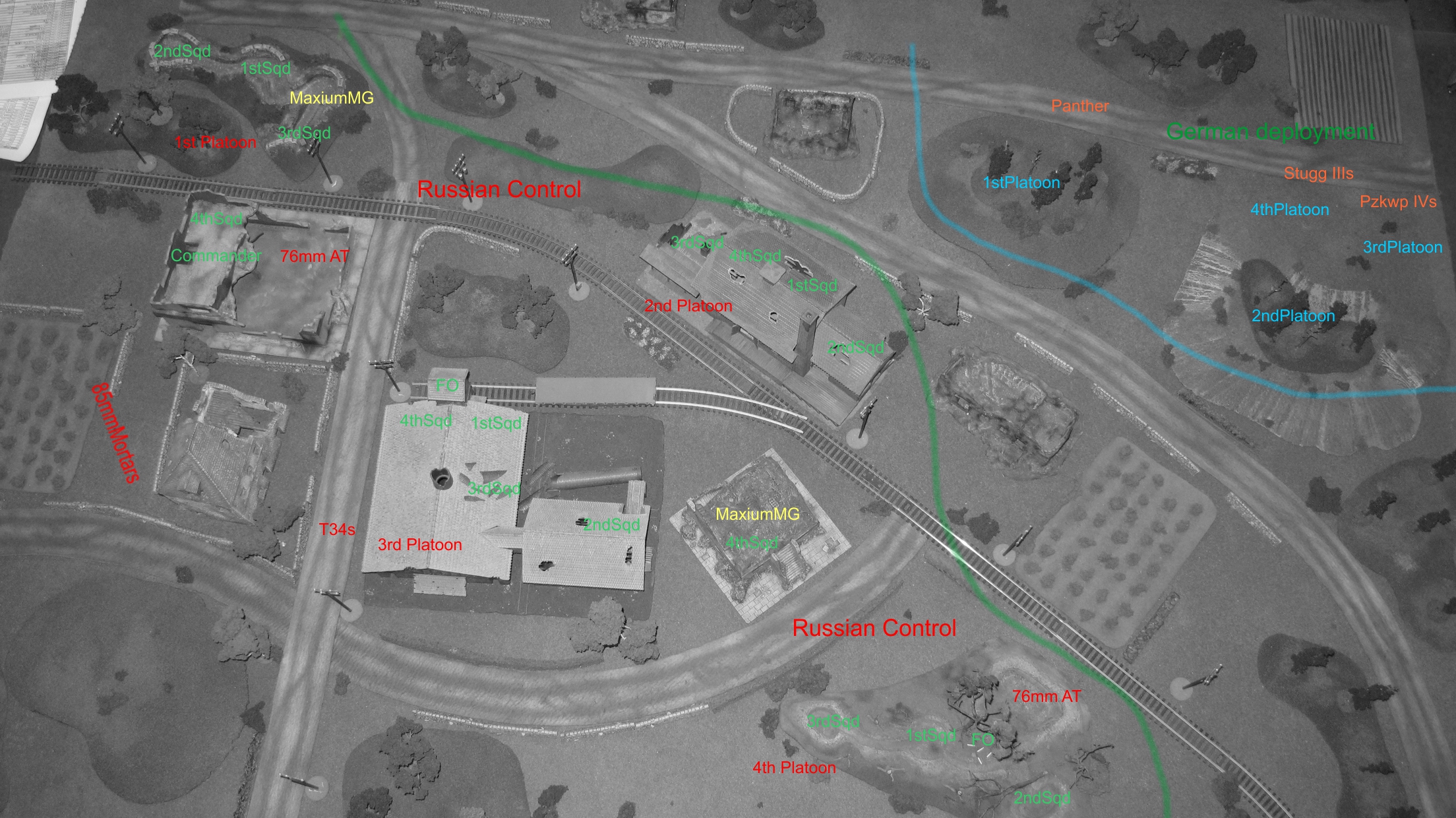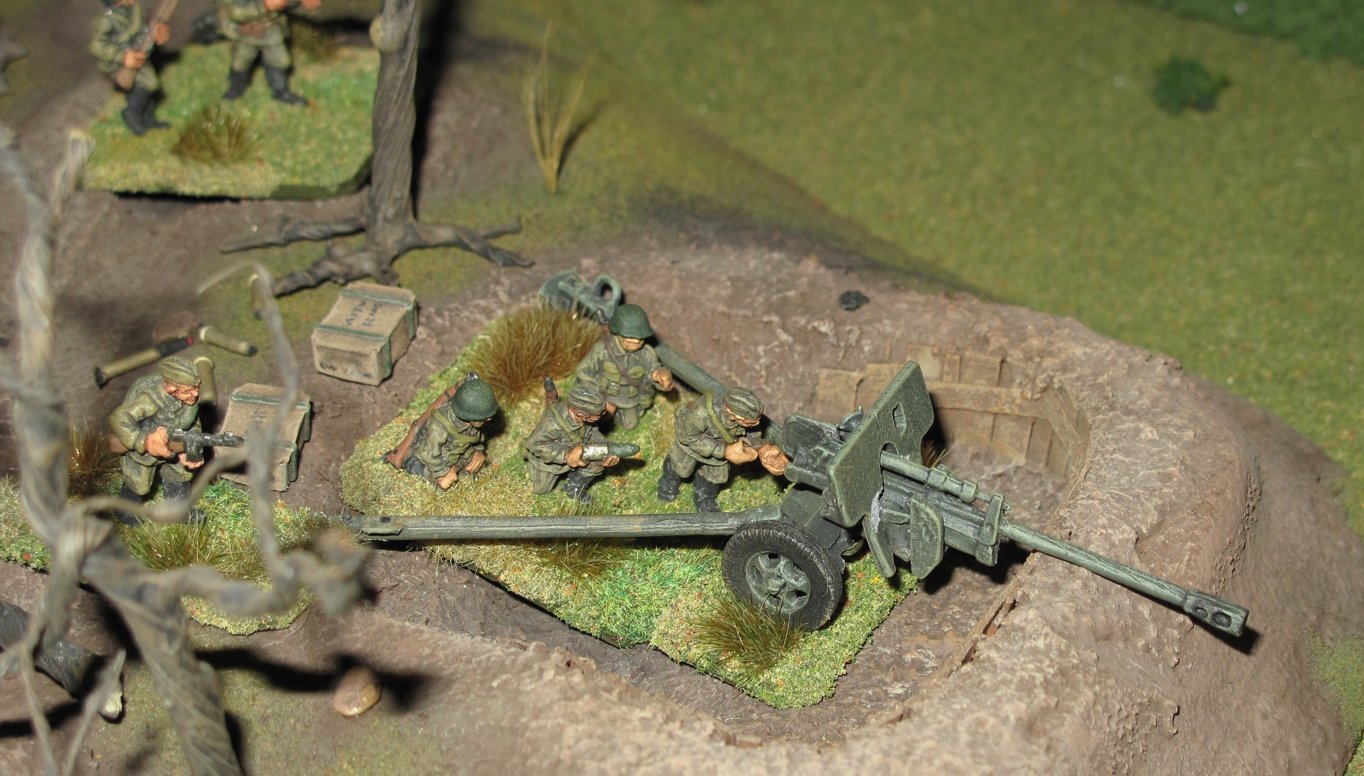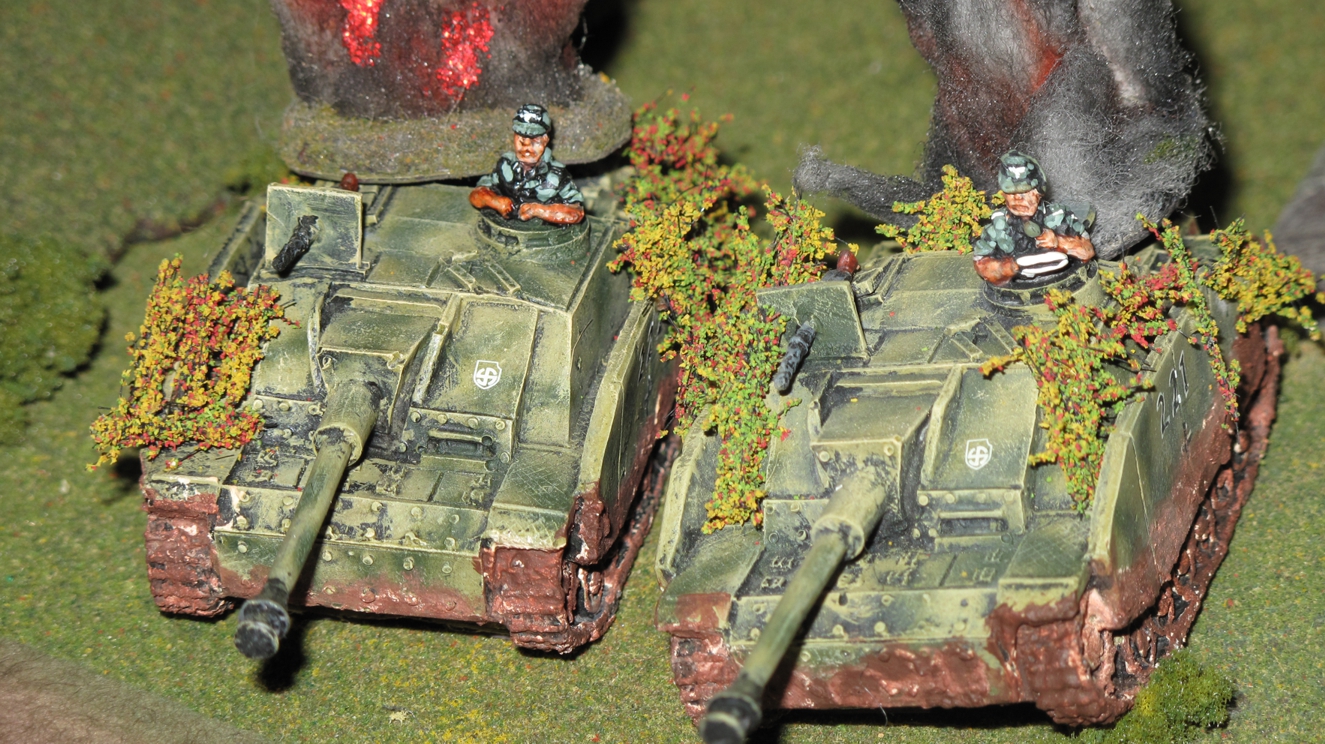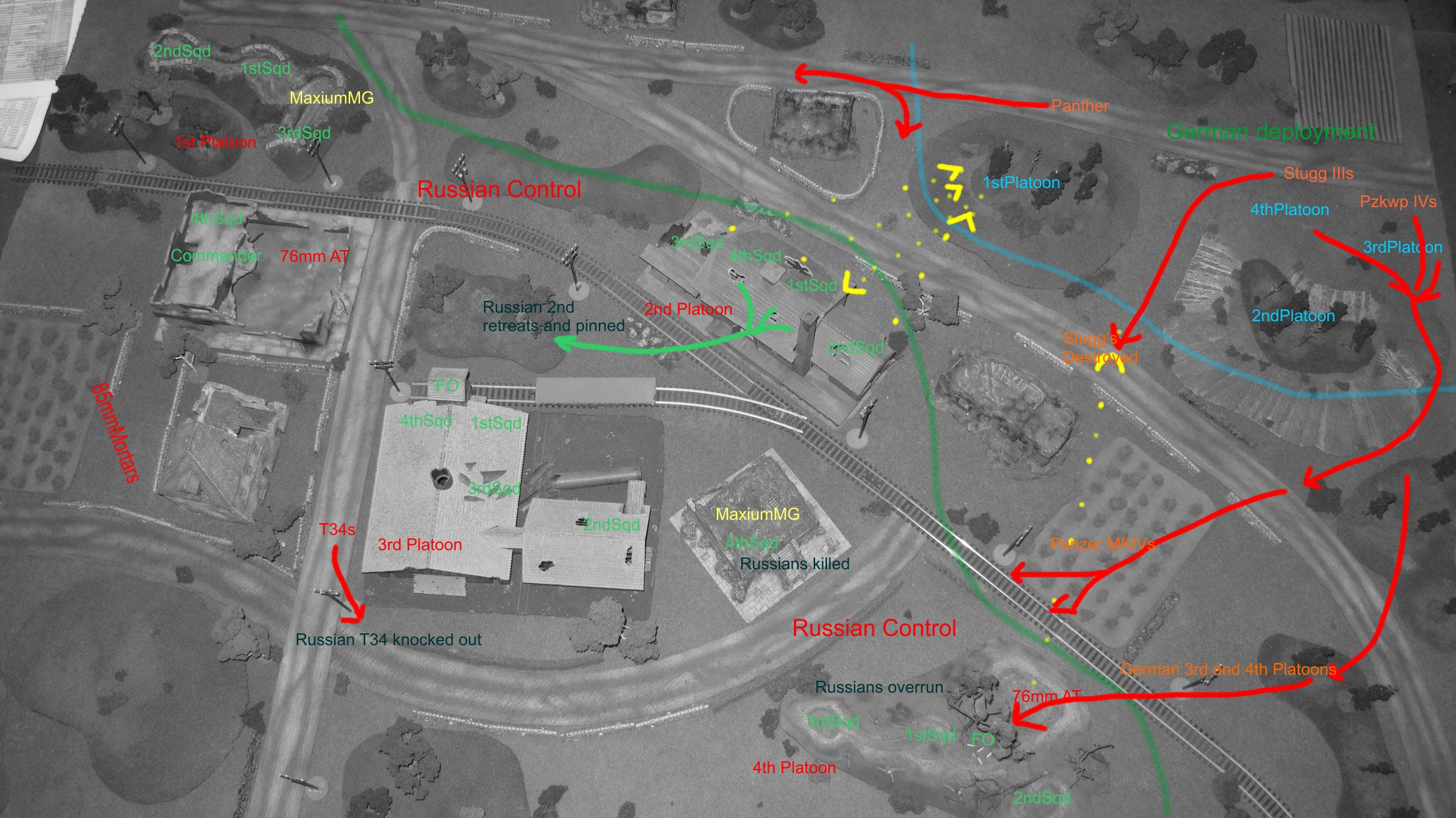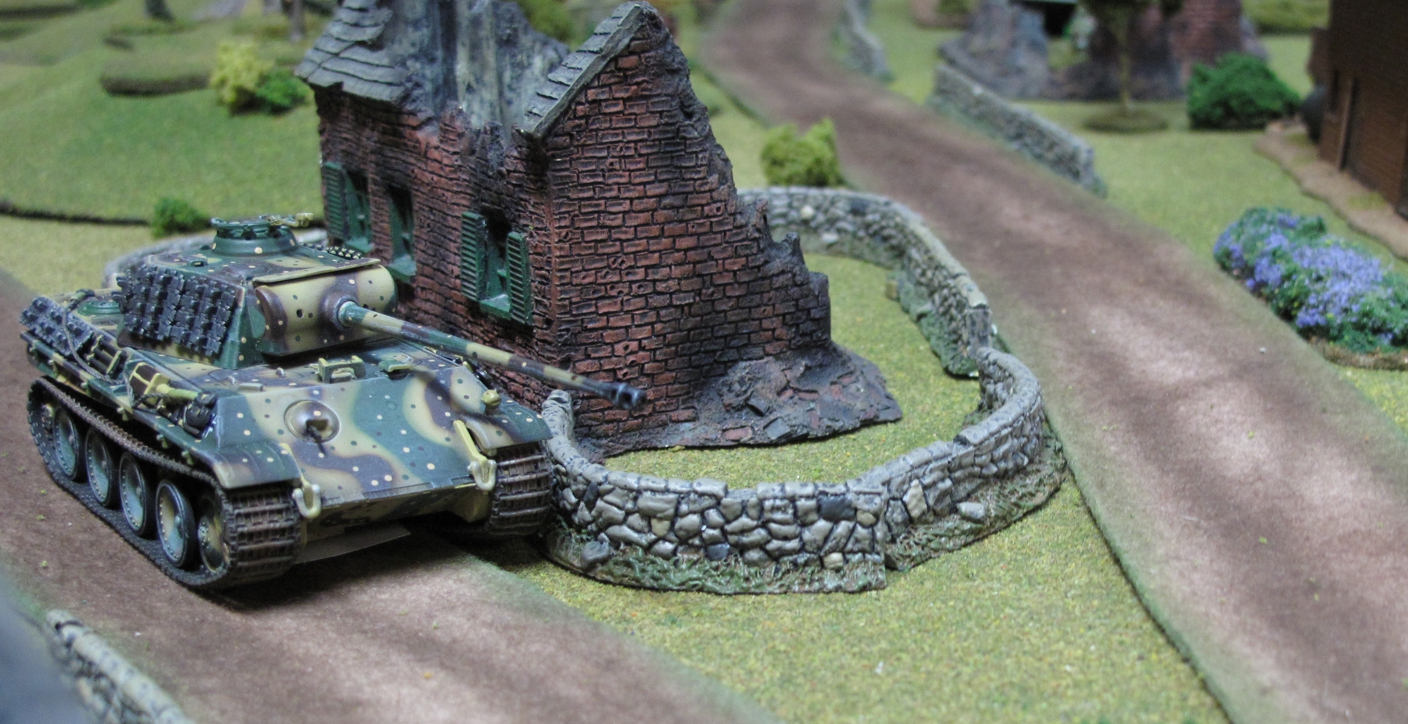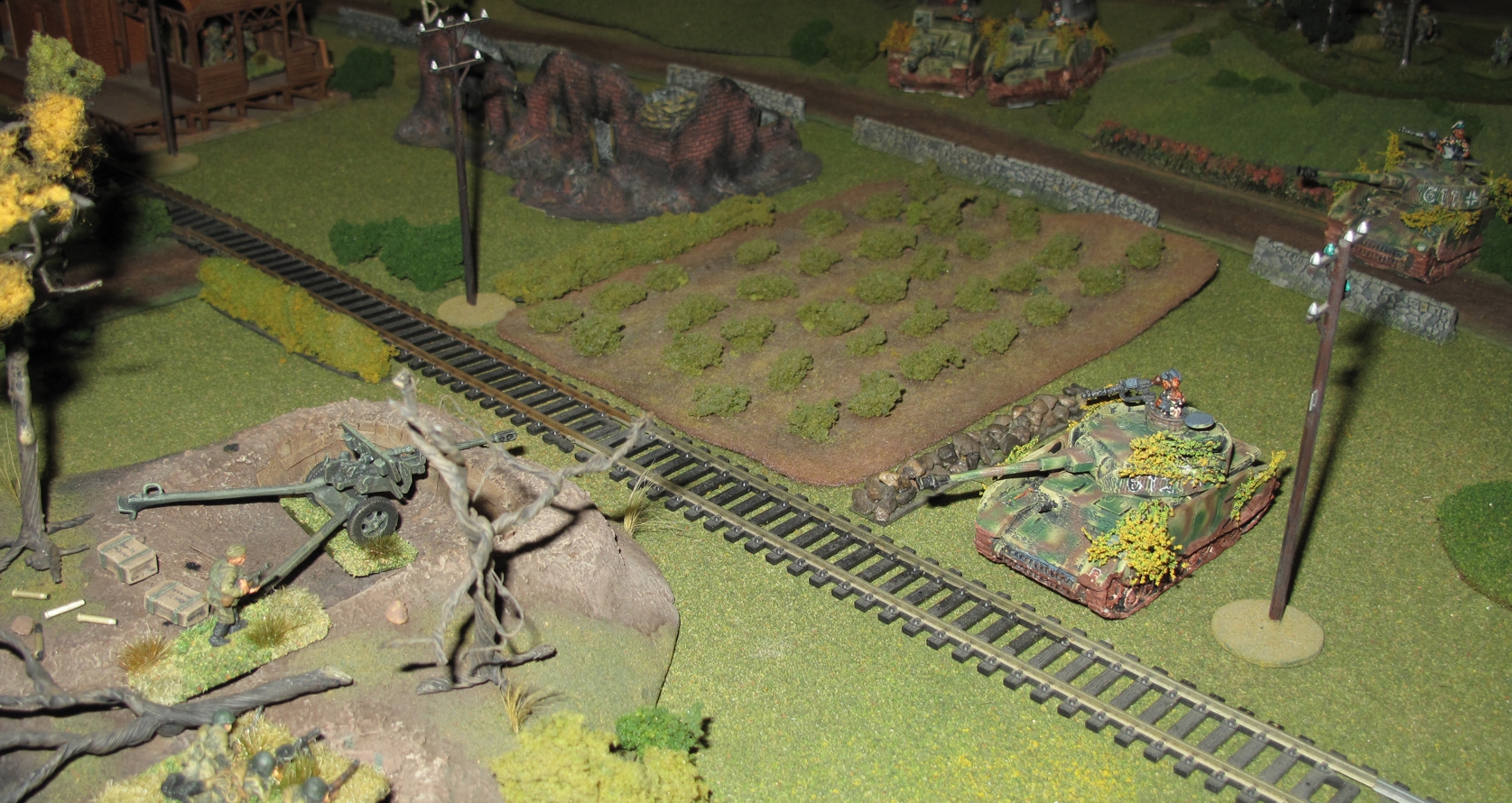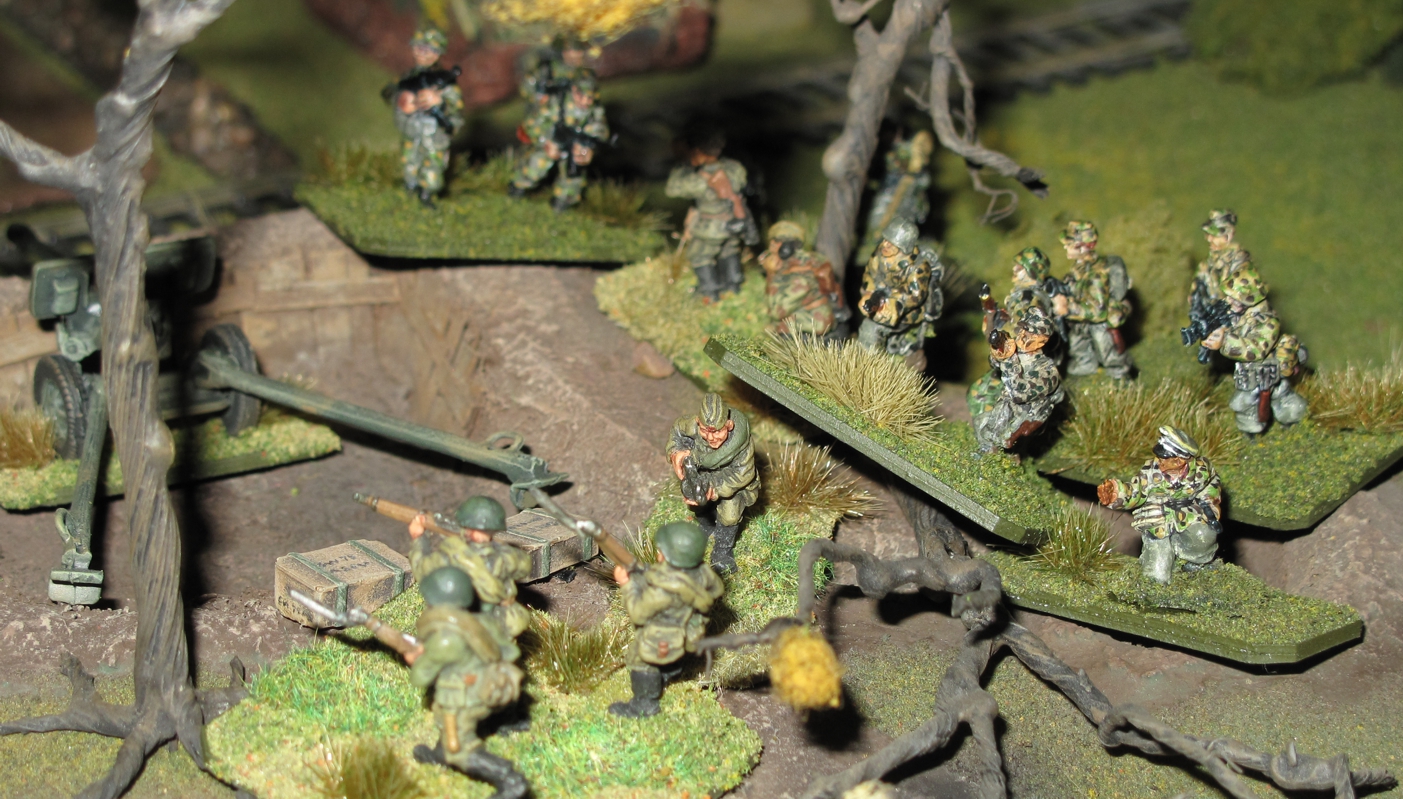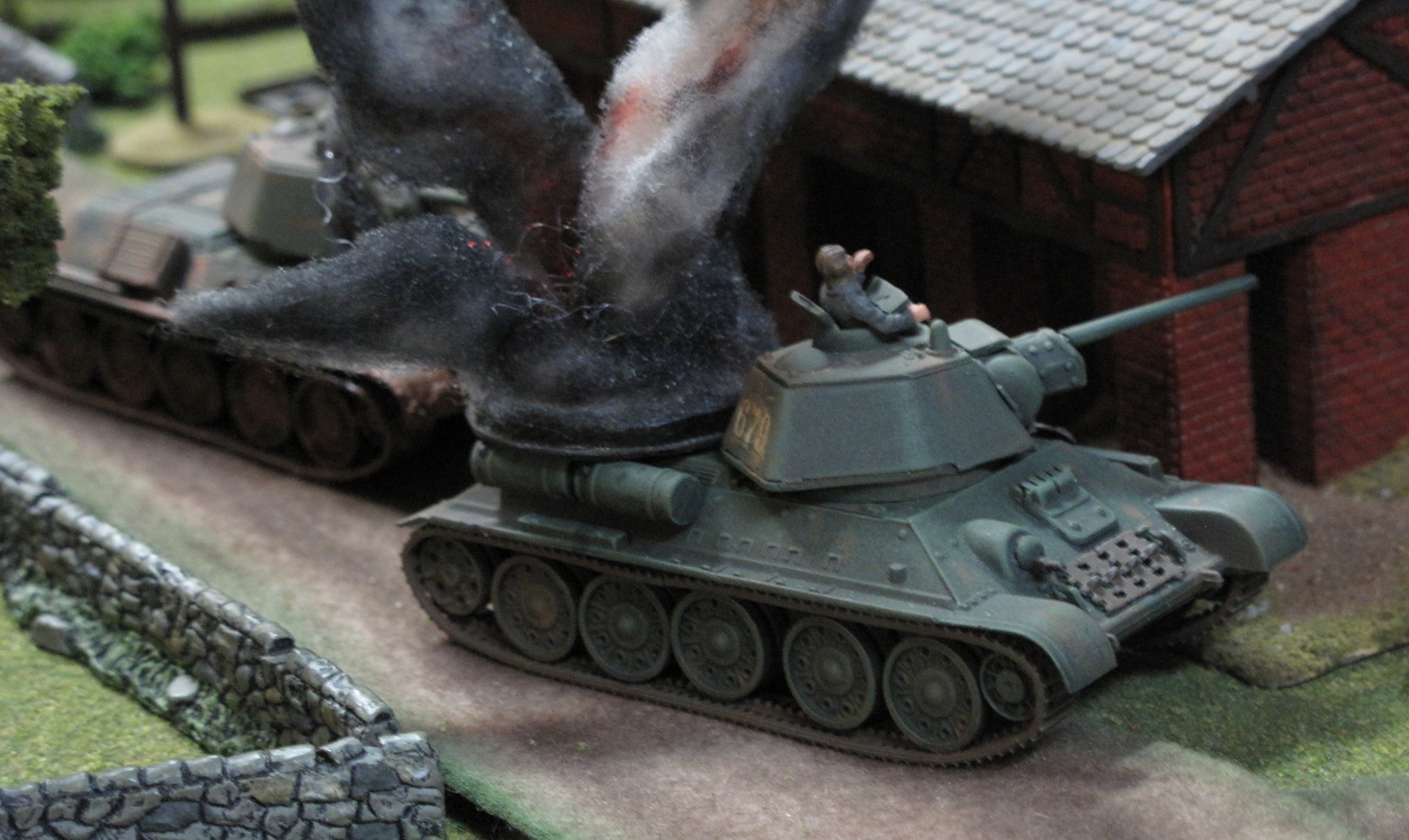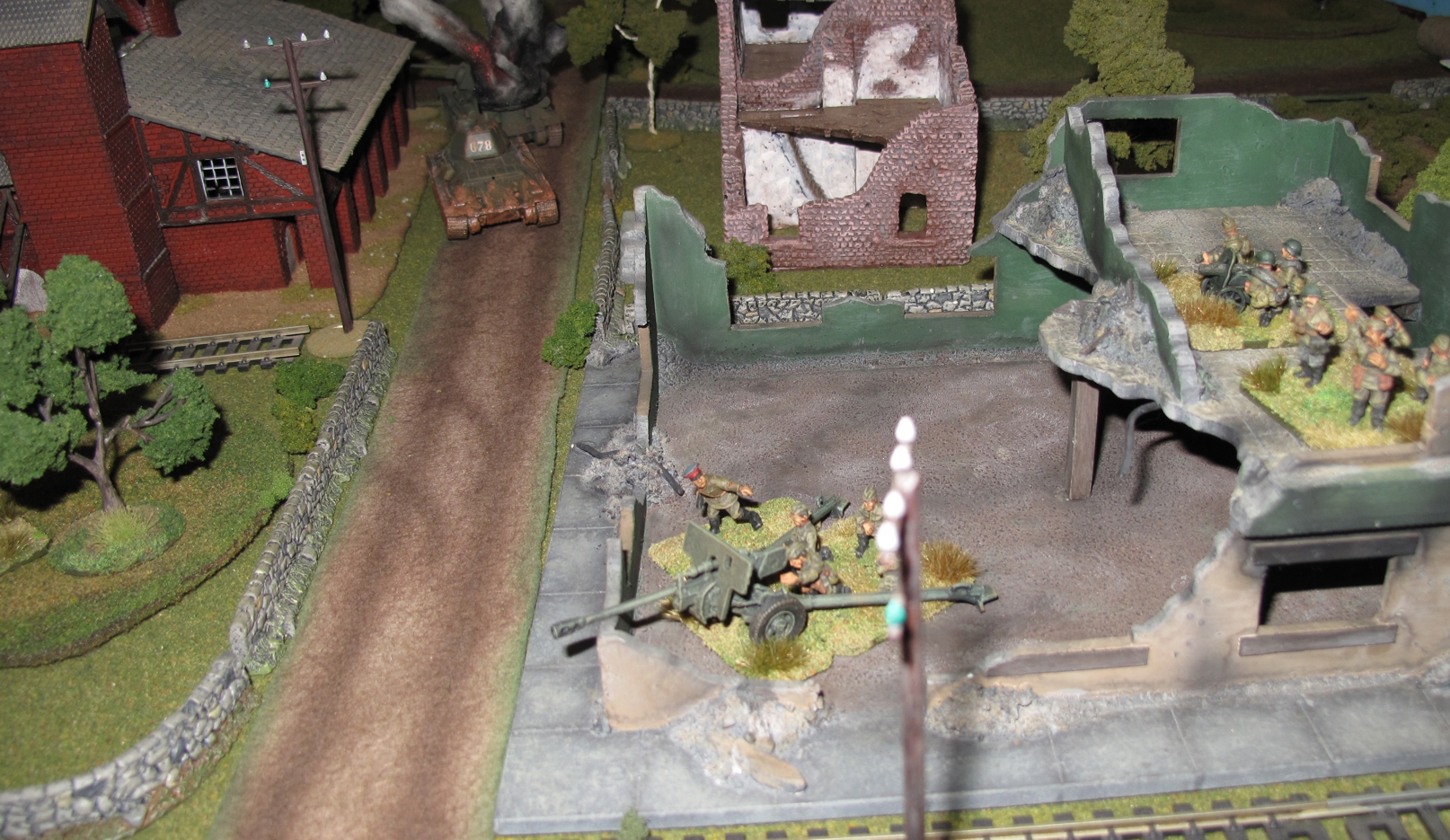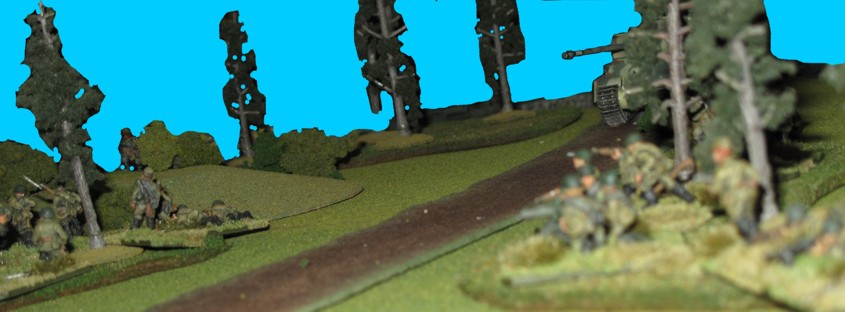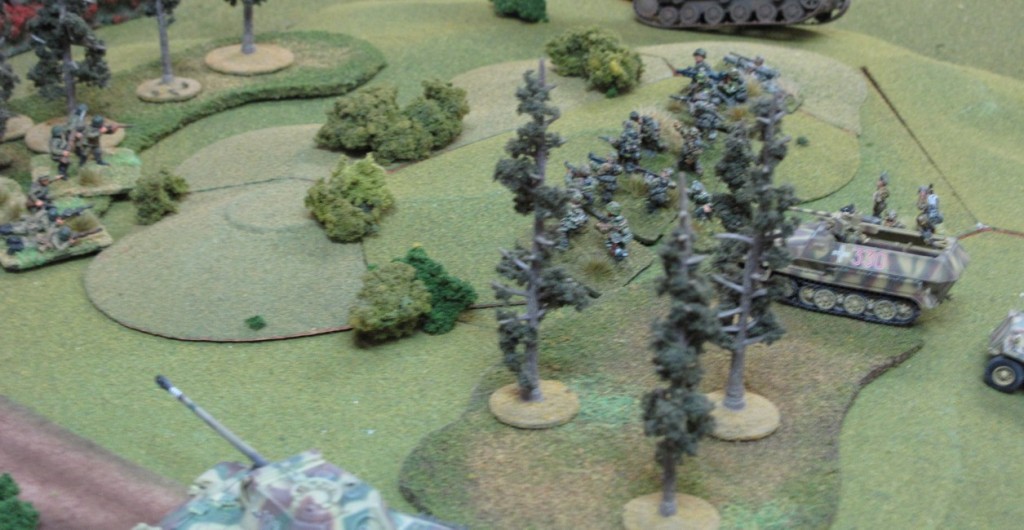The first real Wargaming I did was WWII micro armor and that became a lifelong fascination with the period, the conflict, the men and women who fought, died, and sacrificed so much for their beliefs. The battles in Europe and in Russia have always had the bulk of my interest as they were by far the most epic and important during the war. Micro armor had me for about 5+ years then I was introduced to 20mm or 1/72 scale WWII figures and was truly hooked. I have collected and played this scale for over twenty years and now have a huge collection of figures (both painted and unpainted!), more terrain and buildings than you could imagine (enough to do Berlin 1945 on a 4×8 table). Unfortunately as happens in wargaming rules change, periods go in and out of fashion, scales too…and over time I and my friends played less and less WWII, some got hooked on Flames of War and 15mm but I couldn’t get behind that type of game, to me Flames of War was a lot like Warhammer 40K, a game that made you buy their bloated rules, buy their figures, use their army list, and frankly the games don’t look like WWII. OK enough of that, bottom line our WWII games became few and far between. Well last week Steve and I dragged out the WWII 20mm toys! Wow I don’t think they have seen the light of day for years! I had even contemplated selling them off! I figured to have one last game before making that kind of decision.
Clicking on a picture will give you a larger version!
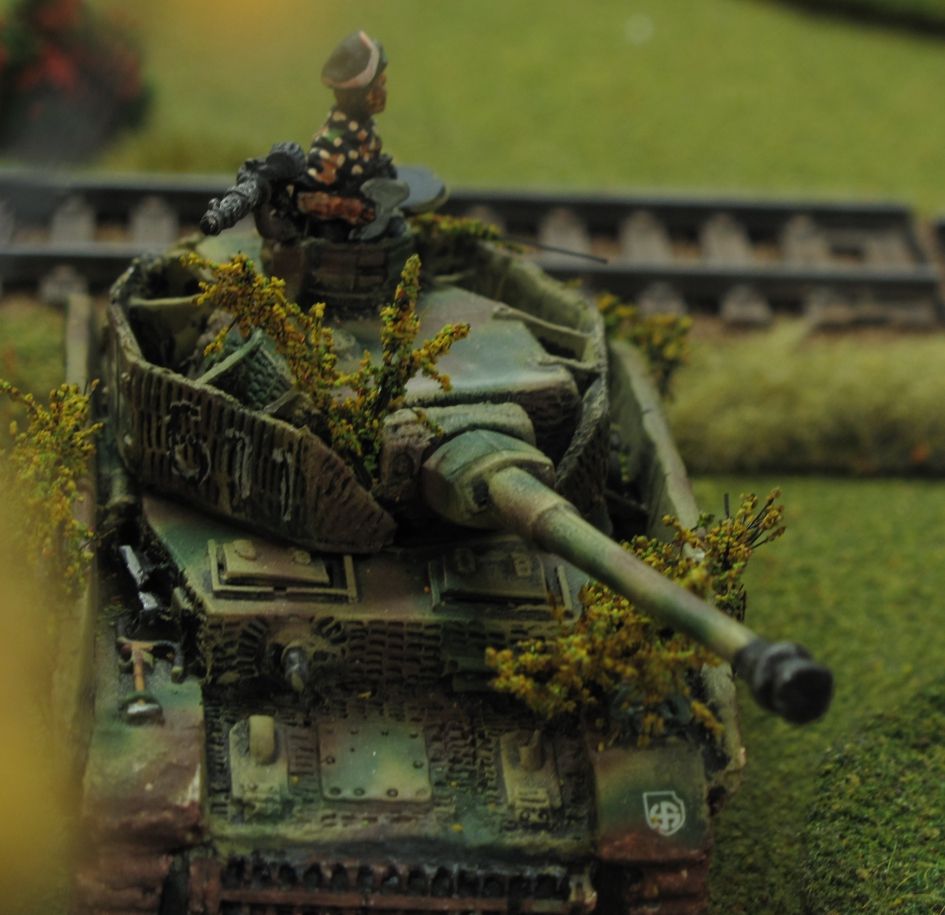
20mm scale is “Gods scale” when it comes to WWII “in my opinion”! I have always felt it gives great detail compared to 15mm, easy on the eyes, fun to paint without the detail or cost of 28mm.

A wrecked train adds realism to the scene as well as breaking LOS and providing cover. I hope to repaint and age these soon and I think this game has sparked my interest to do it!
For most of my WWII games I like to use maps to aid with the hidden deployment. I make this easy by setting up the terrain then taking a overhead picture and producing a map from it for the players.The Germans had the advantage of being deployed in defensive positions covering about 3/4s of the map with the Russian entering on the remaining quarter. Crossfire uses hidden deployment so I as the Russians had to start by probing the German lines in an effort to find them. This first probe quickly got out of hand and turned into a full-blown attack by the Russians.
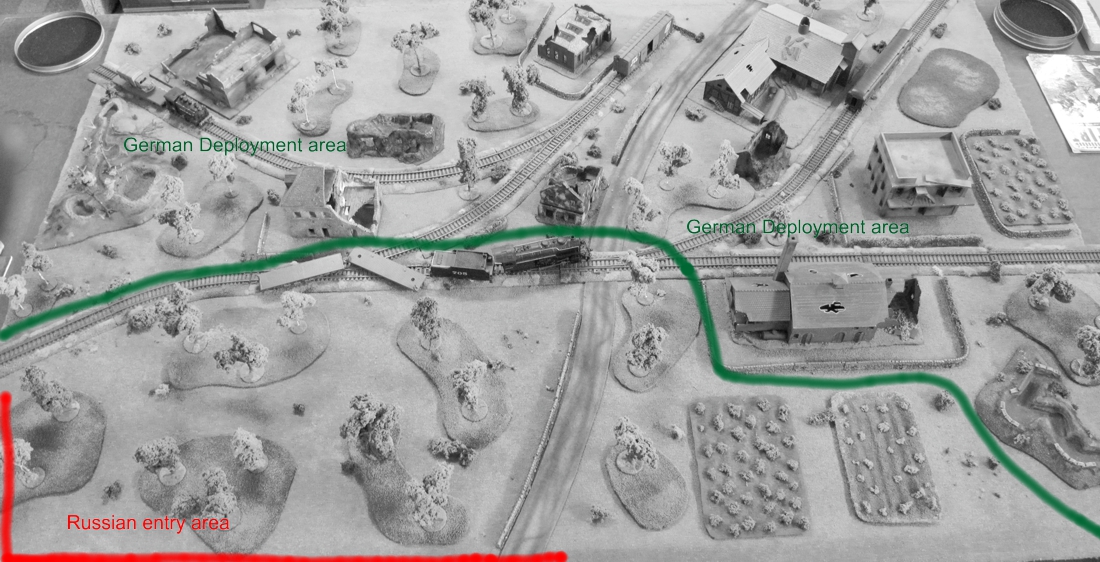
The commanders maps are made from pictures taken from “their” side and then put in a clear page protector. Players then use “wet” erase markers to mark their deployments and moves.
We did a Russian front scenario loosely based on a game we did perhaps 4+ years ago where its late 1944, the Germans are fighting a tactical withdrawal back towards the borders of the Reich. The fight takes place with the Germans trying to hold a strategic section of railroad open as long as possible to allow both military and civilian transport trains to move west and escape the Russians. German forces consisted of a Company of infantry, a couple of Heavy Machine gun squads, 1 81mm mortar, 1 PzIV H, 1 Panther, and flak 88 AT gun. Russians had 2 companies of infantry, 2 Heavy machine guns, 2 x 120mm mortars, 3 T34/85s, and 2 ISU 152s. They also had some off-board artillery.

One of my first 1/72 scale buildings done 25 years ago! As I remember this one was from an Arifix kit and made of cast plaster! It originally a RAF control tower, I added stairs walls on the roof, window frames, doors, ect…. Its still going strong!
The Germans had the advantage of being deployed in defensive positions covering about 3/4s of the map with the Russian entering on the remaining quarter. Crossfire uses hidden deployment so I as the Russians had to start by probing the German lines in an effort to find them. This first probe quickly got out of hand and turned into a full-blown attack by the Russians.
Steve played the Germans and I the attacking Russians. The rules used were CROSSFIRE by Arty Conliffe, a very unique set of rules that while fairly simple use some very interesting mechanics that in my opinion give players the ability to play WWII in a much more realistic way. Less emphasis on dice results and more on tactics and maneuverability.
One of the problems with most WWII rules and with larger scale rules in general is the “10,000 foot General” the fact that both player can see the deployment of the enemy force and couple that with most rule systems “I go, You go” turn based approach the games lose the ability to simulate the uncertainty in the decision process that commander faced in the field. In most games you look at the map see the other fellows force disposition and plan your attack. you can see all your enemies move and simply counter them as they can with your forces. Games turn into a simple stacking of odds and who roles better dice!
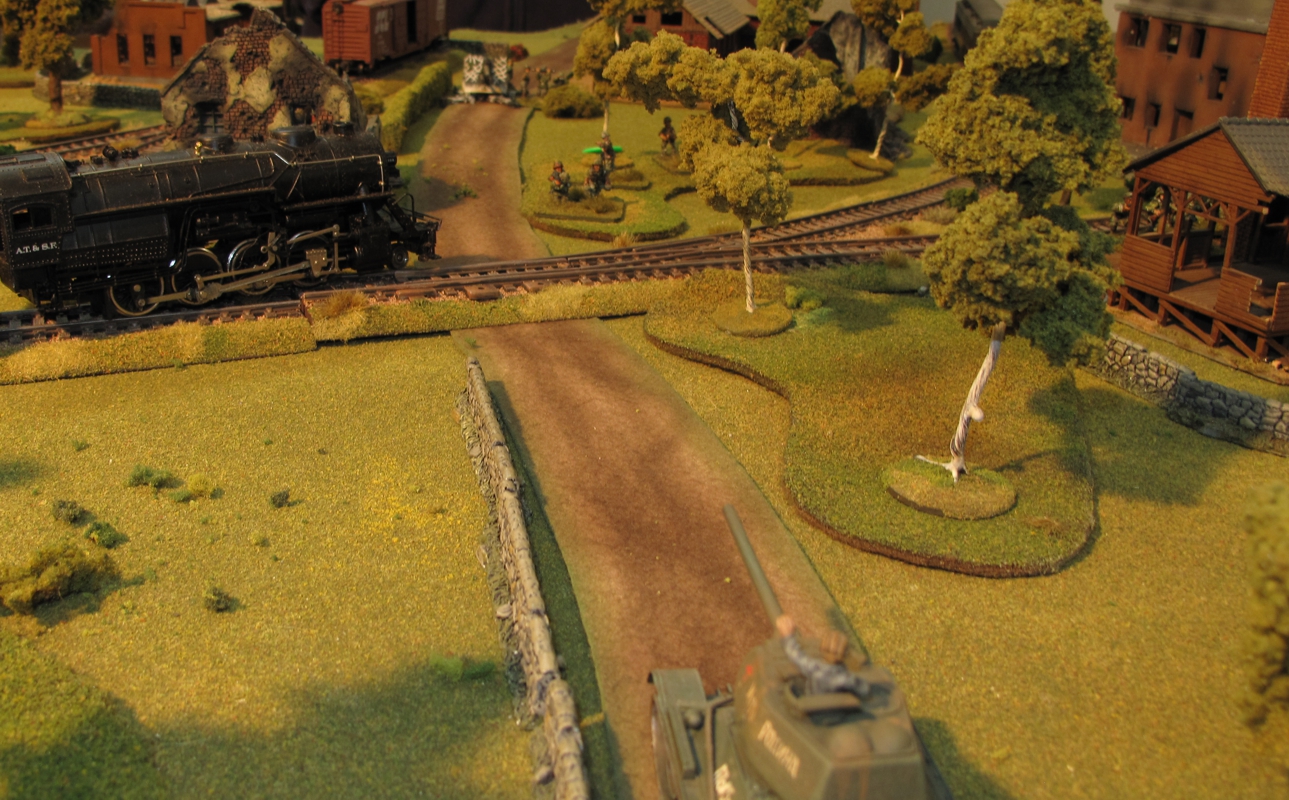
Russian armor appears in the form of three T3485s on the main road. Silly Russians…what are they thinking? That big striped thing down the road isn’t a Zebra!
Crossfire has fairly simple yet novel mechanics that allows you to as the defender to use the fact that the enemy would not really know your positions until the battle was joined and even then that knowledge would be limited. That is why in defense smaller forces many times held of or even destroyed attacking forces many times their size.
Steve has a long-time reputation for poor die rolling so I had taken fewer troops to compensate, that was a big mistake! Steve proceeded to roll better than I have ever seen frustrating all my attacks.

Steve’s Panther works a crossfire with the flak 88 to insure a killing zone on a suspect Russian approach area. The control building was the main German held strong point.
The trains and the original track came from a HO set given to me by a neighbor. The trains need repainting and some conversion work to look more European. The track has been mounted on PVC, repainted, and flocked to look more part of the terrain.
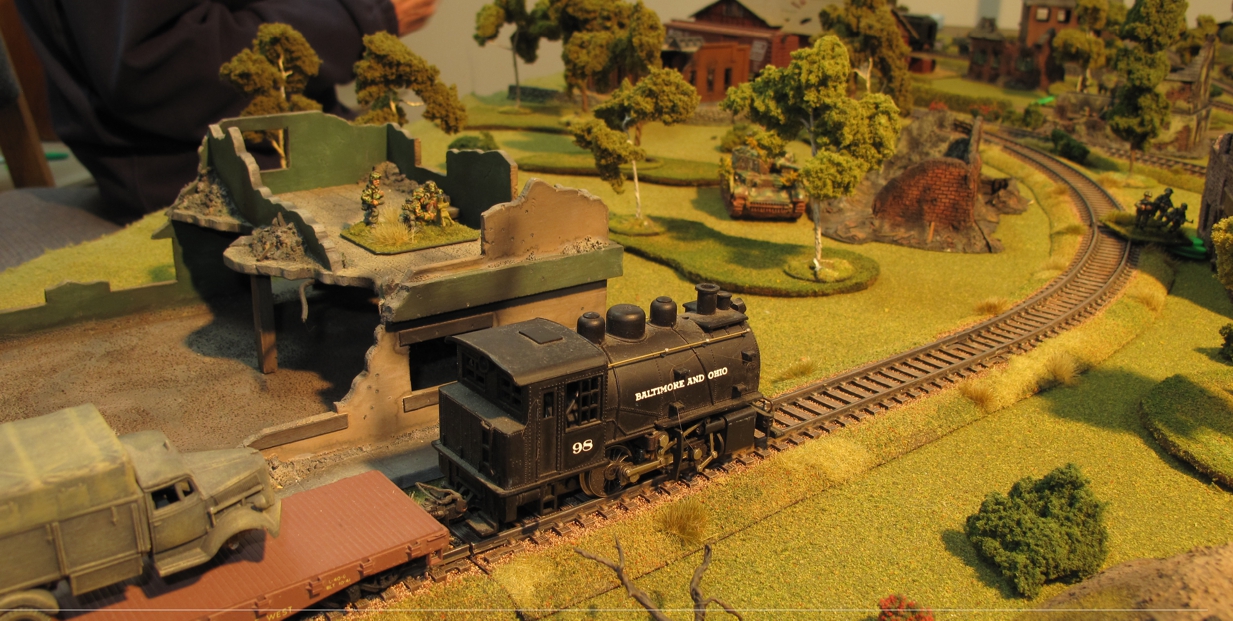
German 81mm mortar deployed in bombed out warehouse. The painting, ageing, and basing of the train track really helped to make it look more part of the scene as well as create a defensive “berm” for troops or hull down position for tanks!
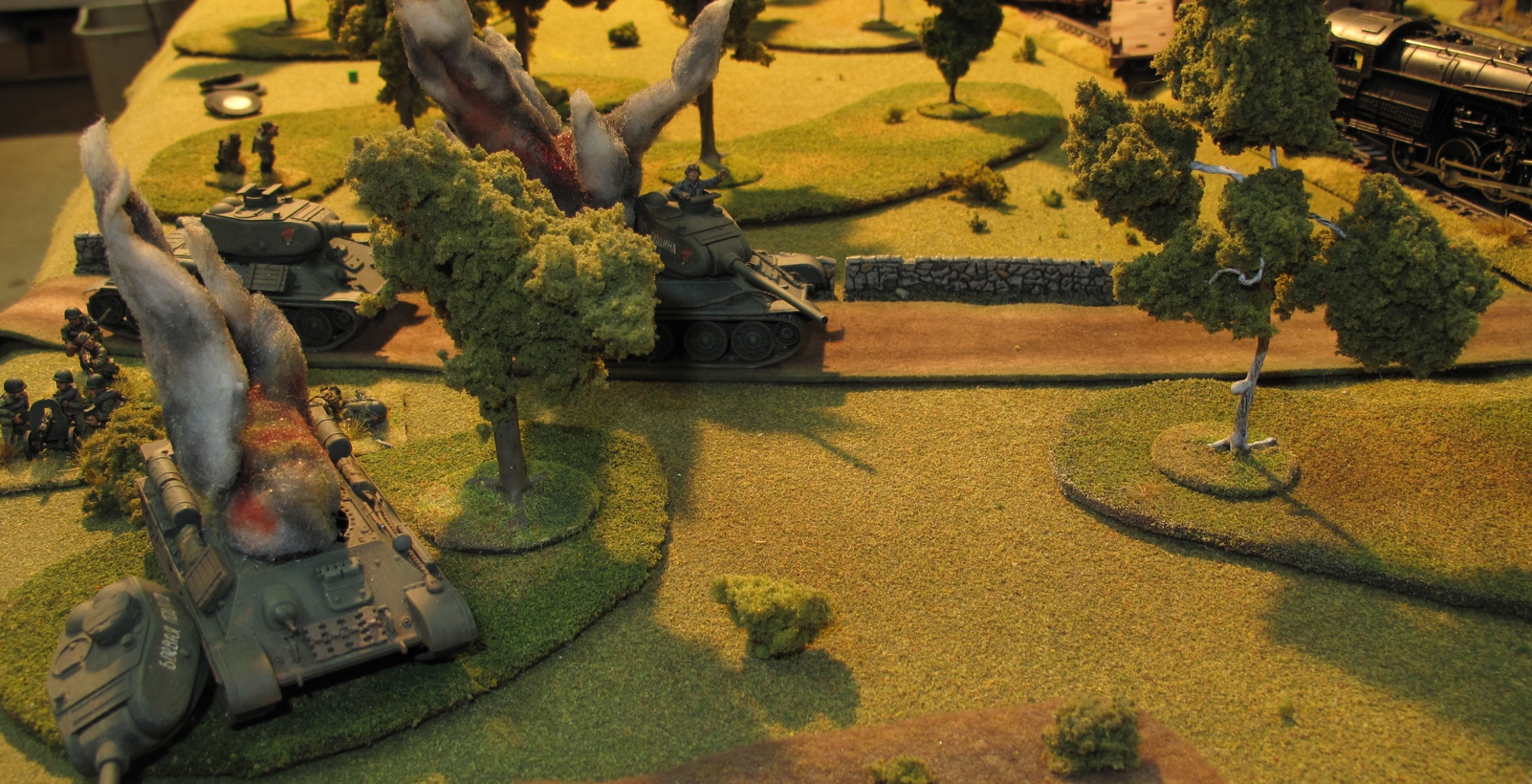
After a short exchange of shots between the German “88” and the T34 the score was T34-0 Flack 88-1! The Panther moved up and soon all 3 T34/85s lay in a smoking pile…
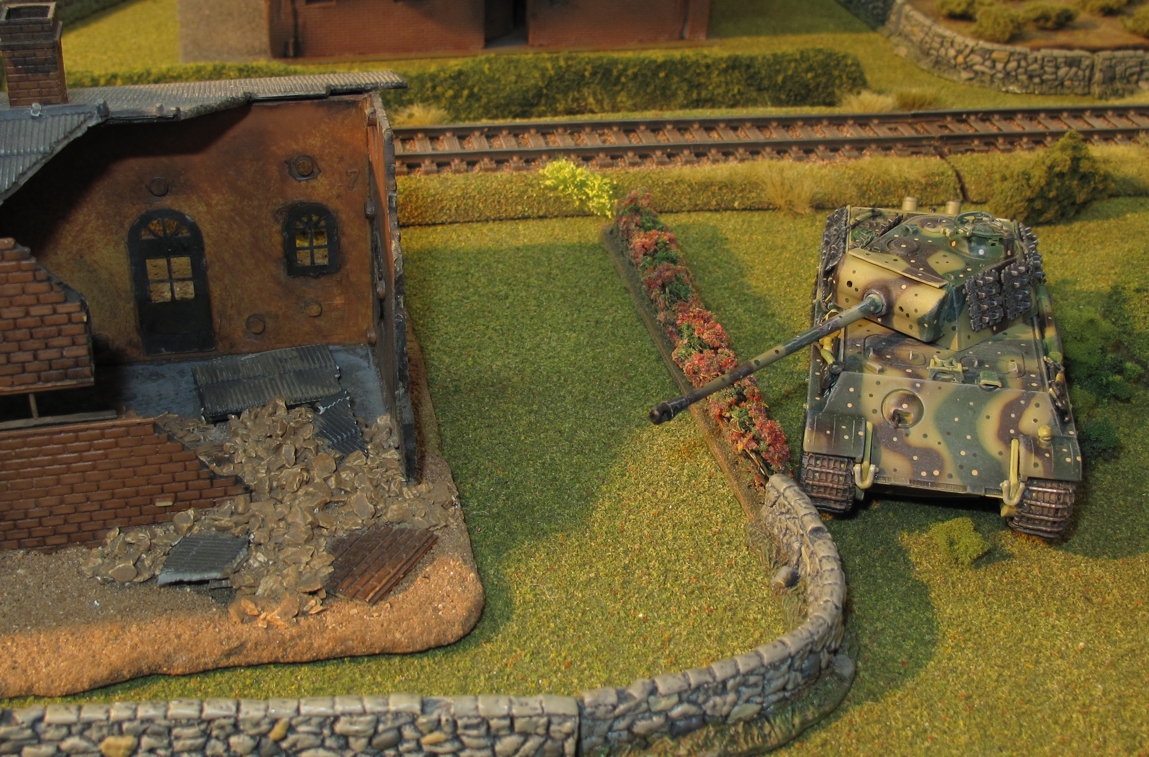
The German Panther moves up into a better position. Now the Russian T34/85s are caught in a deadly crossfire!
The other flank saw the second Russian push but the results were not any better. The first Russian squad to leave cover was pinned down with heavy casualties, I ordered two Russian ISU 152s to destroy the German Mark IV and take the pressure of my advancing infantry but with Steve’s stellar die rolling they too soon lay as smoldering wrecks!
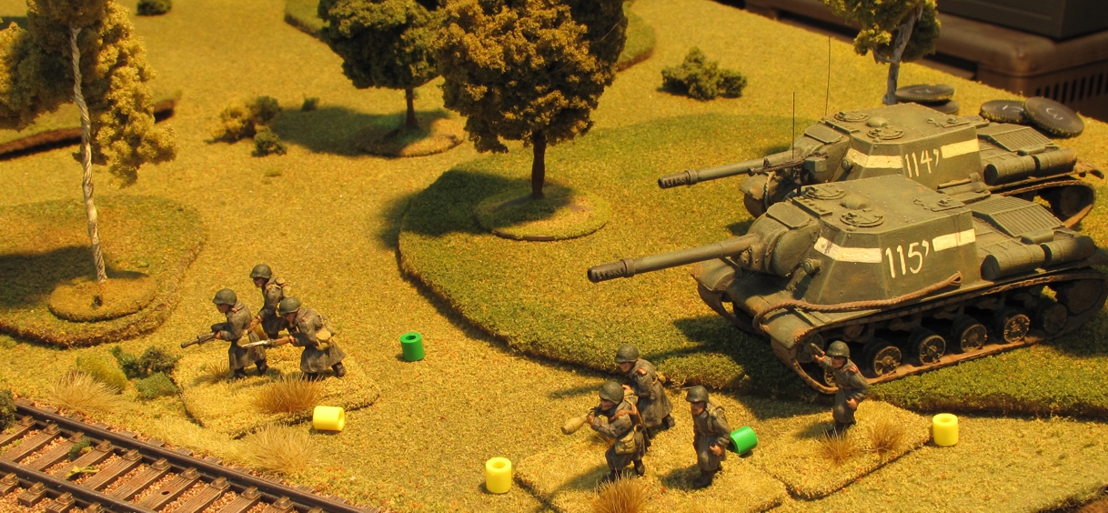
Britannia ISU 152s move up only to fall prey to the exceptional German fire! The pips/beads are use to mark things like Pinned, Suppressed, No fire, etc..
So within two hours the Russians lay strewn about like so many spilled matchsticks, their armor all ablaze, and I as the Russian commander being escorted into the woods, flanked by several commissars, to a fate familiar to “under preforming” Russian leaders…Dam we haven’t had that much fun in a game for years! I may even paint some stuff of the 20mmm lead mountain. .

A second German strong point on the other side of the railroad yard. The German forward observer scans for Russians.


